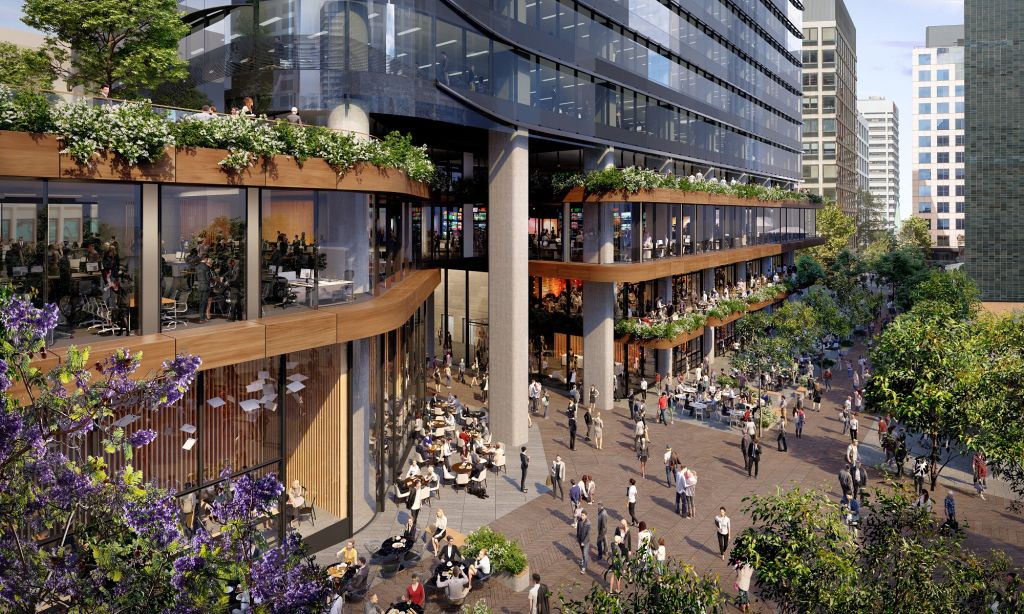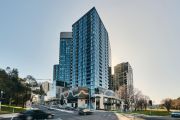
North Sydney office market surges ahead with biggest vacancy rate drop in Australia
The North Sydney office market recorded the sharpest vacancy rate drop nationally in the first half of 2018, beating CBDs across the country, the latest Property Council of Australia figures show.
All office markets on the north shore and Macquarie Park saw a decline in available stock, led by North Sydney’s vacancy rate decrease of 1.6 percentage points to 6.3 per cent.
In the suburb, 13,552 square metres of stock was withdrawn, with a net absorption of 558 square metres.
Withdrawals in the past six months include nearly 9900 square metres at 61 Lavender Street for residential conversion and more than 3700 square metres at 118 Mount Street that has been demolished, Savills’ associate director for capital strategy Shrabastee Mallik said.
“With no new supply due in the market until early 2019, we will continue to see vacancy rates fall,” she said.
She added that increasing demand for space in North Sydney came from a rise in white-collar employment, especially from smaller occupiers and education, IT and tech firms.
“With limited available space in the neighbouring CBD and a rejuvenation of the North Sydney area, tenants are increasingly identifying the potential of the market as a viable alternative to the Sydney CBD.”
Property Council NSW’s executive director Jane Fitzgerald said relief was on its way for tenants, with more than 130,000 square metres due to be completed in North Sydney from 2019 onwards.
Close behind North Sydney is the Crows Nest and St Leonards market, tightening by 1.1 percentage points to 9.9 per cent.
Ms Mallik said the area is being influenced by ongoing withdrawals for residential conversions.
“At the same time, demand remained strong for the market, with just under 5000 square metres of office space being leased in the first half of 2018.”
Tightest sub-markets
Out of all CBD and non-CBD sub-markets, East Melbourne has the lowest vacancy in Australia despite it edging up slightly to 3.1 per cent, PCA data shows.
JLL’s head of office leasing Victoria Stuart Colquhoun said while the fringe CBD suburb is smaller, a combination of medical groups, sporting bodies close to the Melbourne Cricket Ground, engineering firms and service organisations have stayed loyal to the area.
“East Melbourne is such a tight precinct principally because the overall NLA (net lettable area) of the East Melbourne cohort is actually reasonably low,” he said.
“The strength of East Melbourne has for quite a long period tended to be supported by more residential development over commercial.”
While vacancy in Parramatta moved up by 0.2 percentage points, it is still one of the tightest non-CBD markets in Australia with a 3.2 per cent vacancy rate.
JLL’s NSW head of office leasing Daniel Kernaghan said no supply has entered Parramatta yet.
“There’s been a few renewal deals that have renewed smaller space; tenants have handed back some space so that might be the change in Parramatta that’s reflected in the PCA numbers,” he said.
“The reality is it’s not a huge market so the numbers can change quite quickly.”
But supply in the western Sydney suburb was growing with an extensive development pipeline including Walker Corporation’s Parramatta Square, GPT’s 32 Smith Street and Dexus’ 140 George Street.
“If all those developments happen, there’s solid supply that will come through Parramatta over that period, probably 2020 through to 2023,” Mr Kernaghan said.
Across the north shore and Parramatta office markets, the vacancy rate is expected to ease consistently, Mr Kernaghan said.
“But it’s not a release valve that came through such as Barangaroo a few years ago where there was such a huge amount of space that hit the market at one time, so it is a much more staggered supply story until we get to 2024 and that will depend what will happen with the over-station developments.”
Savills Victoria director Mark Rasmussen urged tenants to act earlier if seeking space in 2019.
“If your lease is going to expire this year or next year, the sooner they can do something about it the better, because it’s only going to get worse. From a supply point of view, the vacancy rate is going to go to historically low levels.
But he said in 2020 and 2021, “a stack” of new supply is coming online in Victora.
“If you can get your lease expiry moved from 2019 to 2020, you’d certainly do a lot better than you would in 2020 than you would in 2019.”













